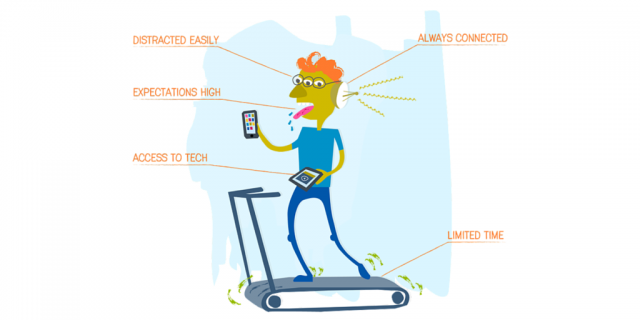How to Motivate Learners: 5 Ways to Make Your Workplace Training Effective in the Modern Age

The world of employee training has evolved significantly over the past decade, largely because modern learners are unlike those in generations past. Today, learners have jam-packed schedules, short attention spans and are constantly distracted by mobile devices. Training was once a “time out” from the rest of the day, requiring blocks of time devoted to learning a job-applicable skill or set of policies. Now, workers want to train while they are doing other tasks so they can keep pace with their responsibilities.
While some employers may view this evolution as a barrier towards workplace training, in fact, education is easily modified to accommodate the unique characteristics of the modern learner. In addition, as baby boomers retire and the workforce is taken over by millennials who have grown up using technology, employers will be forced to develop training methods that reach their increasingly distracted and tech-savvy workers. Here are five ways to make your workplace training effective in the modern age
1. Make the Training Useful
With access to extraordinary amounts of information, modern learners have little patience for irrelevant skills or data. Training must be linked to each learner’s specific role with clear takeaways to apply to the job. While this does not necessarily mean creating a training program for each individual employee, it is wise to focus on working groups with distinct responsibilities.
Not all learners consume coursework the same way. Consider providing options for different modules that individuals will find more interesting. When employees can pick and choose the method and content that is most meaningful, they will not only retain the information better but also be more engaged in the program.
2. Make the Training Short and to the Point
Take a moment to consider how often you stop your work to check social media. If you are like many people, it’s probably quite often, and your employees are no different. Instead of hours of focused attention on a task, workers are accustomed to thinking in short bursts. Take advantage of this tendency when developing your training programs. If you simply focus on what’s important, that’s probably easy to accomplish.
Make video content no longer than five minutes. A full elearning module should be no longer than 15 minutes in total, which is short enough for employees to fit in between other daily tasks. Integrate short quizzes and feedback requests into each module so employees will pay greater attention to the session instead of simply clicking through it.
3. Make the Training Rich With Images and Videos
In the modern workplace, there is still a place for text-based learning, but elearning modules should rely heavily on images and videos to enhance recall. Graphics and charts not only give learners an immediate picture of a data point but also help them remember information. If you write that one half of a population does one thing, and one half does another, employees may be less inclined to pay attention to that point than if they see a pie chart divided in half.
While the look and feel of an online course are extremely important, it may be tempting to overuse graphics. Too many pictures, or infographics that are too complex, could, in fact, impair employee recall instead of enhancing it. Keep it clear and simple while still remaining focused on images that tell a story.
4. Make Interactivity a Key Element
Let’s be honest — even your most devoted employees probably don’t want to participate in a training program. Since many are still thinking about tasks they must complete when the training session is over, elearning developers have to incorporate ways to enhance engagement. Employees can just sit and take notes, but giving them something to do will go further towards enhancing their focus.
Instead of a mere quiz at the end of a segment, consider using an interactive game both to teach and to test retention of information. It may be simple or silly, but it will be enough to stop employees from checking their phones when they should be paying attention to the module. The intellectual element of the game will also help employees to remember what’s been taught.
5. Make it Mobile Friendly
Your workers want to work at a location that’s conducive to them and their lifestyle; their elearning should be no different. With the accessibility of mobile devices and the expectation that modern workplaces should be on the cutting edge of technology, workers expect that elearning modules are available on their tablets or hand-held devices. This means the training doesn’t have to happen in the office; indeed workers can do it whenever they feel they can fit in the minutes to learn a new skill or policy, within the time parameters set by your organization.
The World Has Changed — So Should Your Elearning
As the modern workforce has evolved, its expectations for workplace training and capacity for information gathering has changed. Employers who do not modify their training programs may discover their staff is ill-equipped to adapt to old methods of developing new skills and learning new policies. At the same time, it’s become easier than ever for workplaces to modernize their elearning methods in order to motivate and properly educate a generation of staff members who think and consume information differently. Make it your objective this year to modernize your training so your staff can keep pace with your industry innovations.






